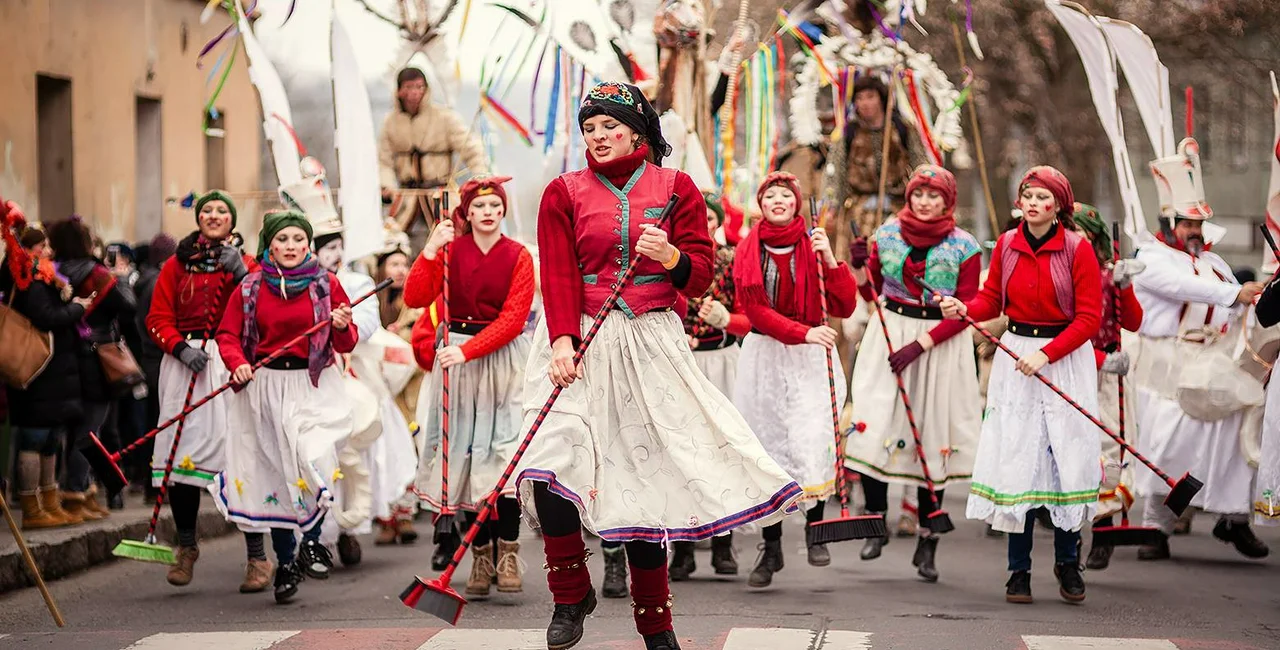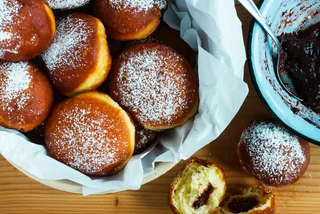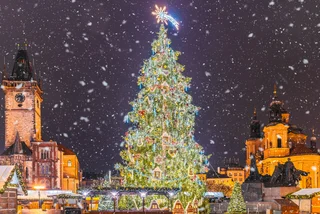Czech Masopust celebrations – the period of pageantry and feasting leading up to lent – begin tomorrow with Tučný čtvrtek (Fat Thursday) and carry on until the Tuesday before Ash Wednesday, the first day of Lent.
Masopust in translation bids “goodbye to meat,” as the Lenten season of austerity approaches. While celebrations in recent years have scaled back due to Covid restrictions this year sees festivities return in full force.
PARTNER ARTICLE
The history
Masopust (also called maškara and in Moravia Fašank) is historically the end of a season of celebration that traditionally begins just after Three Kings Day, on Jan. 6. The folk ritual has been celebrated in the Czech lands for over 700 years.
Modern festivities typically begin on the Thursday before Ash Wednesday, creating a six-day period marked with costumes, parades, and festivals. Long ago it was common to have costumed gatherings on both Monday and Tuesday with traditional dances for married couples or costumed people performing minor tasks around the village.
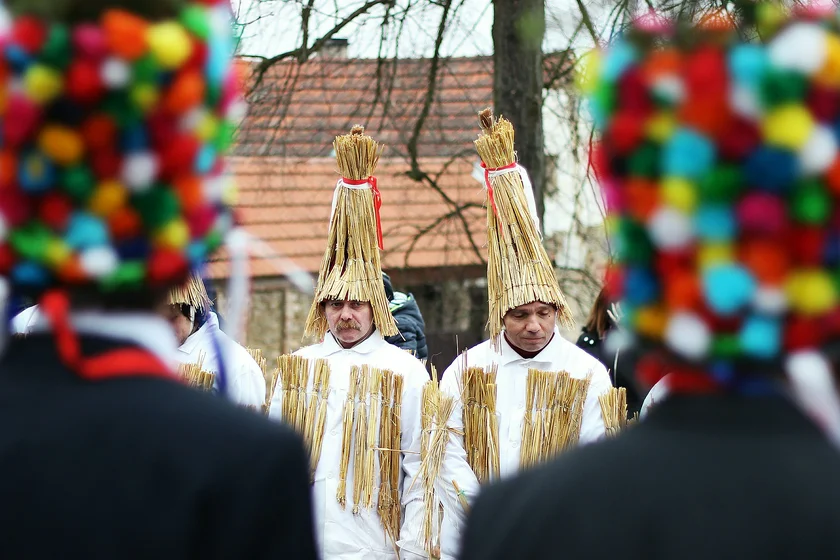
In 2010, the Masopust processions in the Hlinecko area of Eastern Bohemia were recognized by UNESCO as intangible cultural heritage. “The Shrovetide processions – banned in turn by the Catholic Church in the 18th and 19th centuries and by the socialist government in the 20th century – play an important role in securing cohesion within the village community,” UNESCO said at the time.
Fat Tuesday vs. Fat Thursday Epiphany begins on Jan. 7 and ends on Shrove Tuesday (or Fat Tuesday) which is the day before Ash Wednesday and begins the 40 days of Lent. Fat Thursday, however, is six days before Ash Wednesday and marks the traditional beginning of the carnival festivities in many European cultures.
The parade
The most traditional costumes include a bear, a mare, a ribboned straw-hatted harlequin, a grandmother with a basket, and a guard. Couples often appear with the gendered outfits reversed. Unpopular politicians are also a common costume.
The bear is perhaps the oldest costume and now is usually made from papier-mâché or synthetic fur. A cub sometimes leads the bear and punishes it for being clumsy. The bear also dances in a suggestive manner. If a woman dances with him and jumps, that will determine how high the wheat would grow.
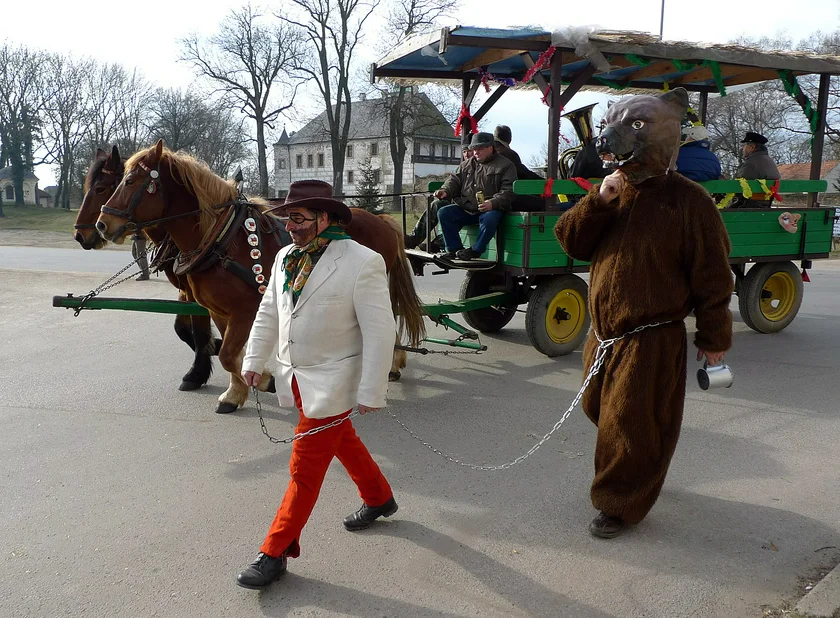
The horse is a costume for two or more people. Riders with a wooden horse head on a stick are a recent addition. The horse is sometimes symbolically killed for its sins at the end of the procession, but then is revived with alcohol so the festivities can continue.
A man in a colorful costume of ribbons and a conical ribboned hat is sometimes referred to as the undertaker, as people would pretend to stab him with food. He is also called the strawman, as the layer under the ribbons and hat should be made of straw.
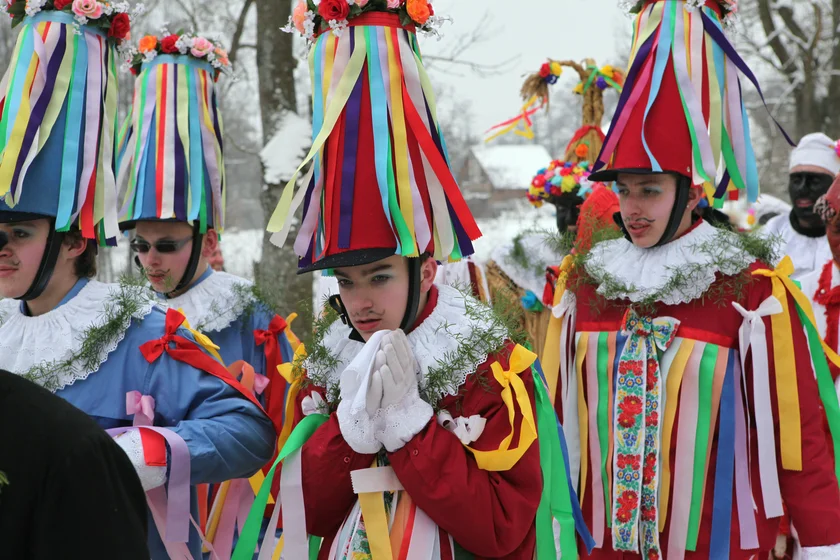
The grandmother with a basket is a bit of a curiosity. Someone dressed as an old woman has a basket on her back with a puppet of a man in it. Another version is a man wears the granny costume, but his male-attired head and shoulders come out of the basket on the back. The granny seen carrying the basket is a life-size puppet head and arms filling the top half of the dress, and walking hunched over.
The watchman, or “laufr,” appears in something like a uniform from the Thirty Years’ War era. They are among the leaders of the parade and would knock on doors in the village to see if the revelers were welcome.
The food
Practices vary greatly from region to region, but on either Tučný čtvrtek or the subsequent Sunday (Feb. 27), called Masopustní neděle, it's customary to eat deep-fried jelly donuts called “koblihy” with a side order of bacon. Poland has a similar tradition and calls the donuts “pączki.” Boží milosti (God’s mercy), crispy fritters made from a butter-based dough and deep-fried and dusted with confectioner’s sugar are another carnival favorite.
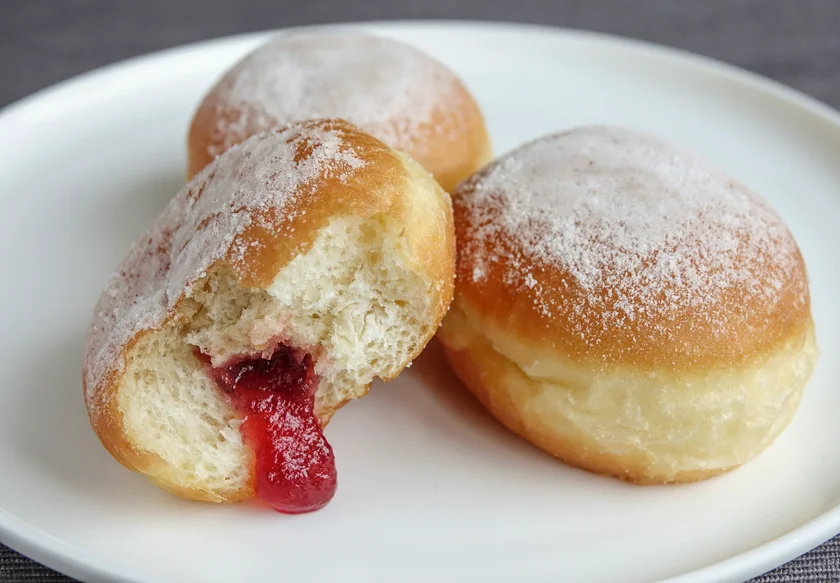
Fat-laden dinners of Czech favorites such as pork or goose are served up during this period along with beer, wine, and slivovice. Pork feasts (vepřové hody) and traditional pig stickings (zabijačka) take place this time of year in association with masopust activities and the butcher plays a prominent role in masopust parades.
The fruits of the traditional zabijačka, or hog slaughter – boiled pork, black pudding, blood sausages, or head cheese – can be found on menus throughout Prague and the Czech Republic during carnival season.
Where to celebrate Masopust in Prague in 2022
There are several celebrations planned in and around Prague this year as well as a newly opened exhibition of photos by Jan Mihalička shot at traditional Masopust festivities over that past five years. See the exhibit at 400 ASA Gallery in Prague 5 until April 8.
Thursday, Feb. 24
Special deals and menus for Tučný čtvrtek will be at dozens of venues in the Ambiente chain. Read more here.
Friday, Feb. 25
Food specials are at Manifesto Anděl from 11 am to 10 pm, plus live folklore music from 5:40 pm to 7:30 pm. The event continues on Saturday. read more here.
Saturday, Feb, 26
The 19th edition of Masopust in Karlín (Karlínský masopust) is family friendly. Children in costume will get a treat. The event starts at Kaizlovy sady at 1 pm and then moves via parade to Karlínské náměstí, where it stays from 2 pm to 7 pm. Read more here.
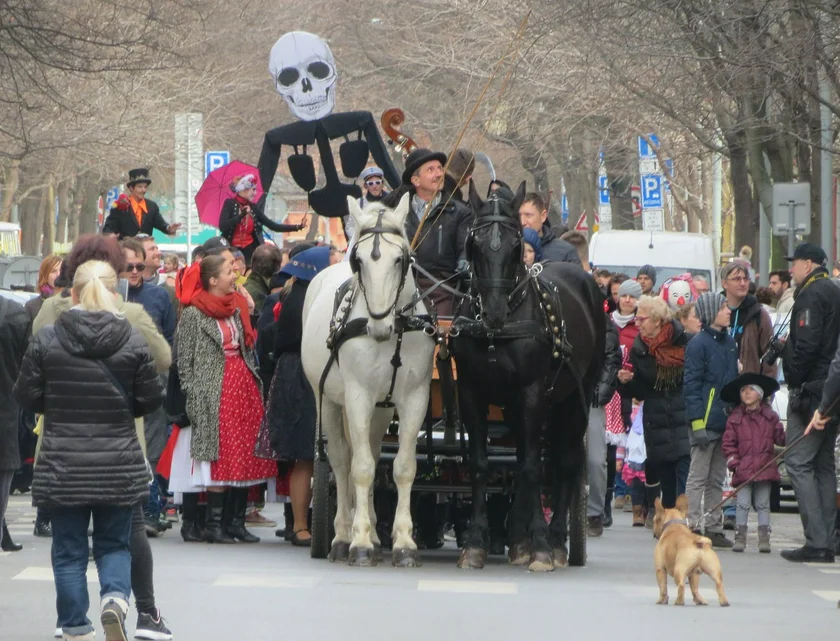
Lots of stops for drinking are part of the route of the Malá Strana Masopust Fun (Malostranské masopustní veselí) which starts in front of U Černého vola at 1 pm and works its way down to Kampa by 4 pm. Read more here.
A fitting place to celebrate Masopust in Letná is at the National Agricultural Museum. Visitors in costume have free entry. (A respirator is not a costume.) There will be exhibitions of historical butchering tools, tours in Czech, and music. More events are at the National Technical Museum, water tower, and Galerie Scarabeus. Read more here.
Live music, a circus show, a costume contest, and demonstrations of how to make tripe are all in this traditional Strahov Masopust pork festival. Strahov Brewery, 10 am to 10 pm. Read more here.
Just north of Prague in Roztoky, there will be a large Roztoky Masopust gathering (Masopustní rojení) of costumed revelers starting at dawn and lasting sunset. Školní náměstí, Roztoky, 5:30 am to 5:30 pm. Read more here.
A beer-centered celebration Únětice Masopust in the Brewery (Únětický masopust v pivovaru) has a special beer and menu plus live music. It follows just after the nearby Roztoky festivities. Únětice pivovar, from 5 pm to 10 pm. Read more here.
The theme of the waterfront’s Vepřobraní food festival is pork. Smíchovská náplavka, 10 am to 6 pm. Read more here.
A children's costume workshop takes place from 11 am to 4 pm, and there are food specials from 11 am to 10 pm at Manifesto Anděl. The event continues from Friday. Read more here.
You can stock up on pork sausages and pastries at a special Masopust edition of the farmers market at náměstí Jiřího z Poděbrad. No parade or carnival has been announced, though. Jiřího z Poděbrad, 8 am to 6 pm. Read more here.
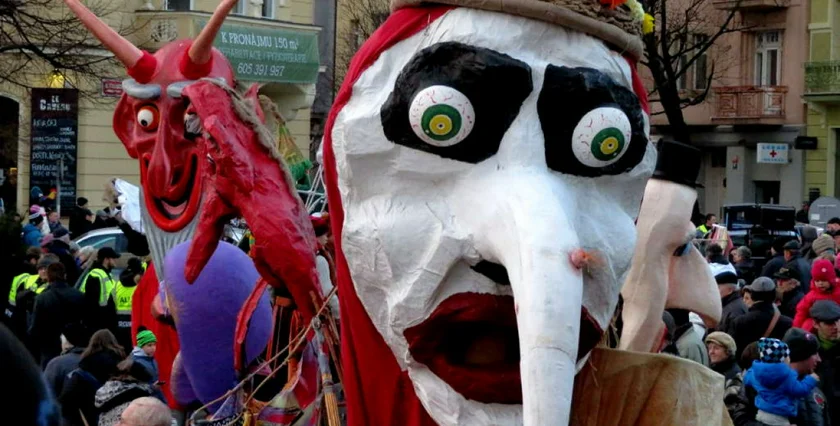
Some of the processions that UNESCO recognizes as intangible world heritage take place at the villages of Studnice and Vortová, East Bohemia. Read more here.
Sunday, Feb. 27
The modern architectural landmark Trmalova vila hosts Old Strašnice Masopust (Starostrašnický masopust), with pork sausages, head cheese, pork soup, and other delicacies from Hostinec U Hubálků in Kostelec nad Orlicí. Trmalova vila, from 2 pm to 6 pm. Read more here.
The Mělník regional museum is the center of Mělník Masopust. There will be a market at that town’s náměstí Míru and a parade at 2 pm. Mělník, Central Bohemia, from 10 am to 5 pm. Read more here.
Tuesday, March 1
The 28th Břevnov masopust (28. břevnovský masopust) will have a parade at 4 pm from the intersection of Bělohorská and Pod Královkou that makes its way to Bělohorská třída. Food and entertainment will be at the final destination. Read more here.
The festival that UNESCO recognizes as intangible world heritage takes place at Hlinsko, East Bohemia, from 2 pm. Read more here.












 Reading time: 6 minutes
Reading time: 6 minutes 